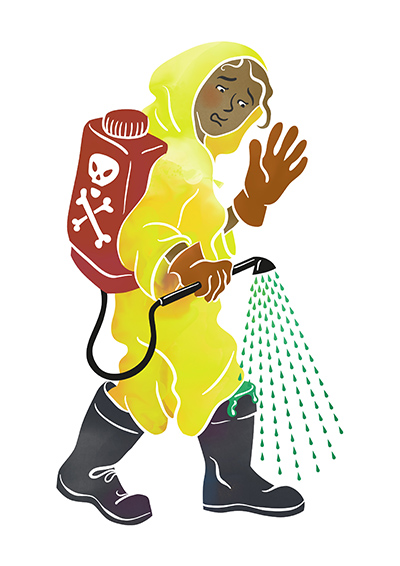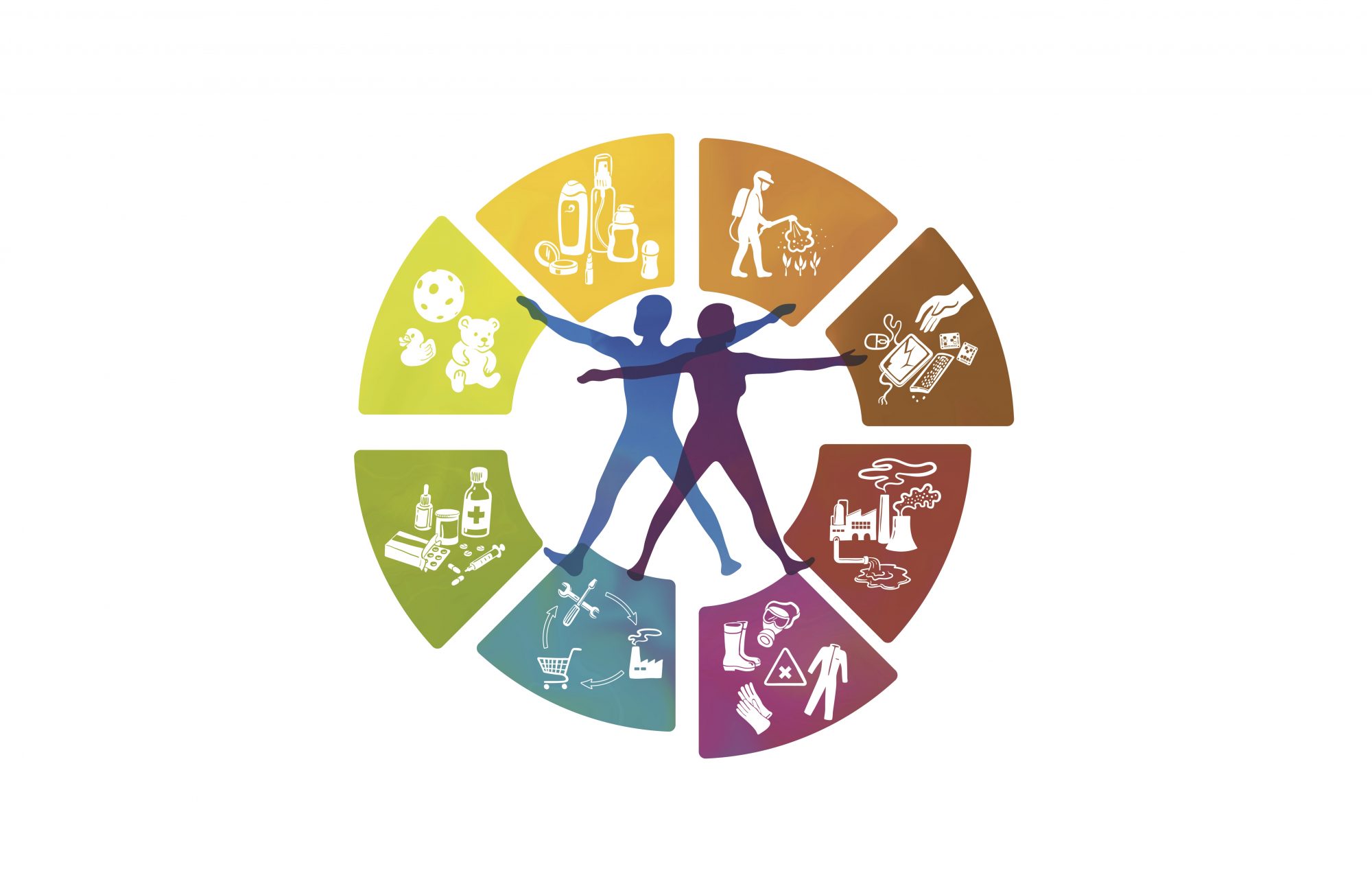#Expert – Blog series: How to create a gender-just healthy planet
by Gertrude Kenyangi
A whole lot, if you ask me! Gender and chemicals are strange bed fellows! I mean, gender is defined as the social construction of masculinity and femininity as opposed to “sex”, which refers to biological and physiological differences. If gender is about social relations, where then do chemicals come in? One would expect chemicals to be in scientific discourses along with science laboratories and not in human relations! However, sex (biology) and gender (a social relationship) interact constantly and lead to gender disparities in all facets of life, including in the handling of and exposure to hazardous chemicals.
Our societies are to a large extent patriarchal, meaning that socio-cultural factors such as norms, values, and beliefs have made men the standard, they have handed men power. Power is a composite word. It connotes authority, legitimacy and force. When one has power one is in a privileged position of making decisions and makes the rules. In the workplace, this has affected occupational segregation, which is the underlying reason for so many gender inequalities. The characteristics of both female and male jobs, the specific features of those jobs (who does what, when, how and for how long), the different responsibilities that women and men have at workplace determine levels of exposure to harmful chemicals.
Chemical exposure becomes a gender issue due to the positioning of men and women on account of their gender. Gender stereotypes have restricted women and men in “feminized and masculinized” sectors of activity (horizontal segregation). This is also true where women and men have the same job, but perform different tasks. In addition, men are more likely to work in jobs higher up in the occupational hierarchy where they are part of decision making and earn a much better income than women, who are likely to have low paying part-time or temporary contracts, with no decision-making power (vertical segregation). Hence gender segregation at the same workplace strongly contributes to an unequal distribution of working conditions and exposure to different physical and psychological risks between sexes also in the same workplace. It determines the different bargaining positions of both men and women, the different abilities to exercise their agency. Job segregation strongly contributes to different hazards exposure and consequently to different health outcomes. As such, men can afford to purchase protective gear like gloves, masks and gum boots while women handle dangerous chemicals bare knuckle! Even if women could afford protective wear, there is another dangerous-chemical-related gender disparity: Across the world, work equipment, tools and personal protective equipment (PPE), have been traditionally designed for the male body size. As a result, women face challenges finding suitable and comfortable PPE because they do not conform to standard male worker model. Uncomfortable work equipment and tools can lead to poor working posture, leading to an increased risk of musculoskeletal disorders (Industrial Accident Prevention Association 2006)!

Even chemicals discriminate in favour of multiplication of men! In recent years, a number of reports have suggested that environmental and occupational exposures to Endocrine Disrupting Chemicals (EDCs) may be altering the sex ratio within given human populations. Sex ratio—the proportion of male to female live births—is very constant on a worldwide basis, typically ranging from 102 to 108 male births for every 100 female births. In a study appearing in the July 2005 edition of Human Reproduction, a group of Swedish researchers analyzed blood and semen samples from 149 fishermen to investigate whether exposure to the persistent organochlorine pollutants CB-153 (a PCB) and p,p′-DDE affected the proportion of Y-and X-chromosome-bearing sperm. They discovered that elevated exposure levels of both chemicals were positively associated with a higher proportion of Y-chromosome sperm. The researchers conclude that their findings add to evidence that exposure to persistent organic pollutants may alter the offspring sex ratio, with the higher proportion of Y-chromosome sperm likely tending to lead to a higher proportion of male births.
To date, many studies, on which much of our understanding of occupational risk is based, have been performed on men excluding women (Punnett/Herbert 2000).It has only recently been defined that gender-related biological differences may result in differential vulnerability of women and men to physical workplace factors such as hazardous substances and biological agents. Generally, chemical susceptibility varies depending how quickly and efficiently toxic agent is metabolized. Regard to chemical susceptibility, some biological differences between sexes could play roles in the real risk associated with occupational exposure. There are various ways of classifying biological differences between sexes regard to occupational exposure to toxic agents. The most obvious are the anthropometric differences between sexes according to muscle mass, fatty tissue, and bone mass. Adipose tissue may make women more susceptible to organic solvents such as all the liposoluble substances e.g. benzene and trichloroethylene that accumulate in fat. Hormonal influences, such as menstruation, pregnancy, lactation and menopause can be important physiological determinants of the biologically active dose. Epidemiologic studies have shown that sensitivity to asthmatic attacks increases in the premenstrual phase and airway reactivity to allergens and irritants varies over time and with hormones (Tollefsen et al. 2007). These differences could make women more susceptible than men to occupational asthma and indicate the need for additional prevention measures during the premenstrual phase.
Not all vulnerability is skewed against women however! Gender discrimination could also influence the collection of useful data. For example, special attention has always been given to women exposed to chemicals that could be hazardous to their reproductive health while this has been little emphasized in men, although many chemical agents could also damage the sperm production and motility. In this regard, there is still a need to improve gender responsive collection and analysis of data in a sex-disaggregated manner on occupational health and chemical exposure. In addition, being born with, you guessed it, a phallus does not socially construct one masculine! There are poor men, with low levels of education and not very competitive on the job market who are as socially excluded as many women. They too handle dangerous chemicals bare knuckle!
References:
Industrial Accident Prevention Association (2006): Personal Protective Equipment for Women. Addressing the Need. Online at: http://elcosh.org/record/document/1198/d001110.pdf
Punnett L., Herbert R. (2000): Work-Related musculoskeletal disorders: is there a gender differential, and if so, what does it mean? In: CA: Academic Press (2000), pp. 474–492.
Tollefsen E., Langhammer A., Romundstad P., Bjermer L., Johnsen R., Holmen T. (2007): Female gender is associated with higher incidence and more stable respiratory symtoms during adolescence. In: Respir Med (2007),101(5), pp. 896-902.
Author

Gertrude Kenyangi is the Executive Director of Support for Women in Agriculture and Environment (SWAGEN), an indigenous organization founded and owned by grassroots women in Uganda. Working for gender equality and women’s empowerment, they mainly focus on women’s rights of access, ownership and control as well as decision making in the environmental and natural resource sector, poverty alleviation and sustainable development. Gertrude is also engaged in the UN Womens Major Group and is the programme & advocacy partner for the #women2030 project.
More Information about SWAGEN and their work you can find on their homepage: http://swagen.org/ , more information about #women2030 you can find here: https://www.women2030.org/the-women-2030-programme/ .
